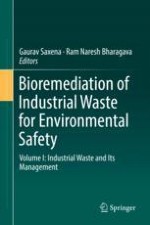2020 | OriginalPaper | Chapter
12. Arsenic Contamination in Environment, Ecotoxicological and Health Effects, and Bioremediation Strategies for Its Detoxification
Authors : Manoj Kumar, Anoop Yadav, A. L. Ramanathan
Published in: Bioremediation of Industrial Waste for Environmental Safety
Publisher: Springer Singapore
Activate our intelligent search to find suitable subject content or patents.
Select sections of text to find matching patents with Artificial Intelligence. powered by
Select sections of text to find additional relevant content using AI-assisted search. powered by
